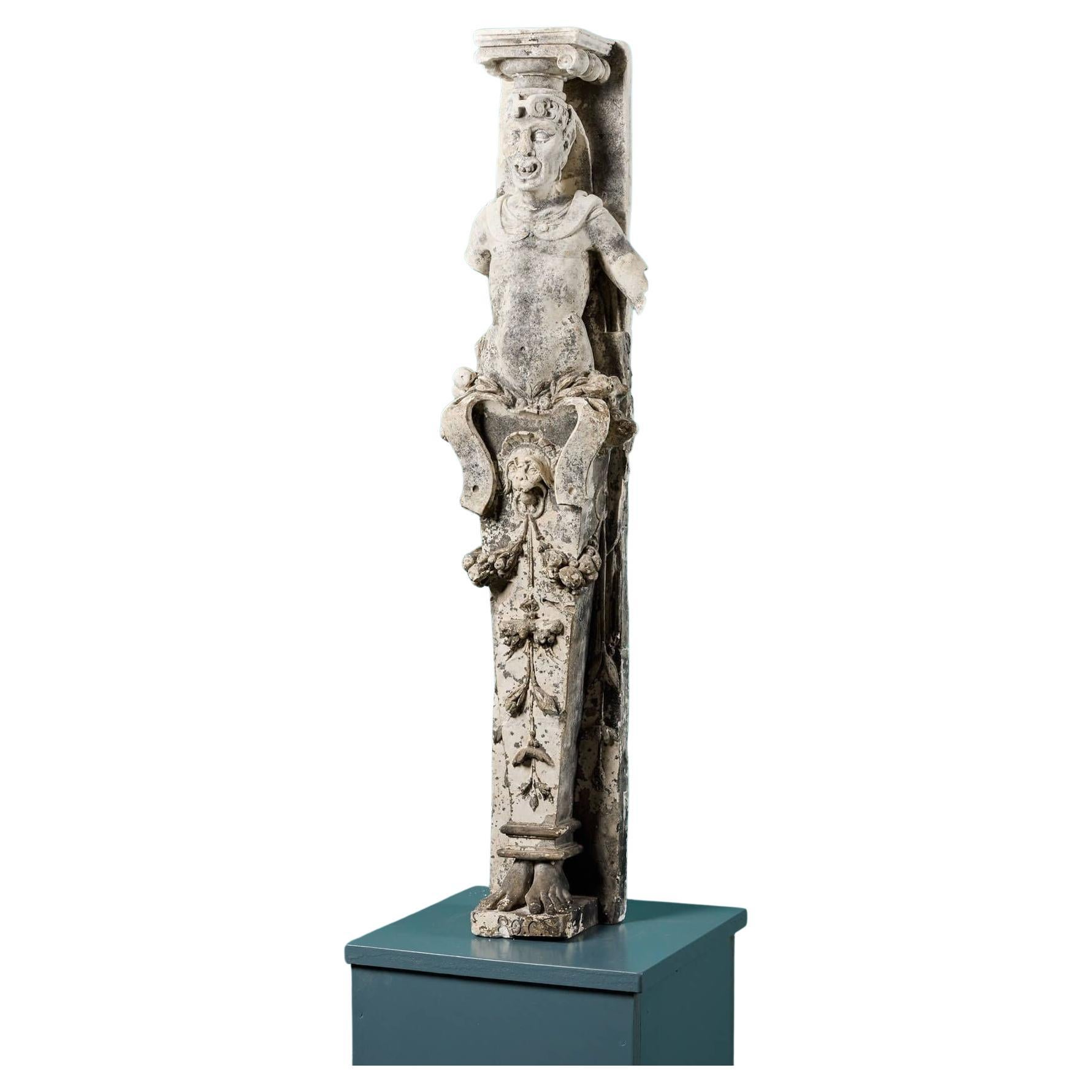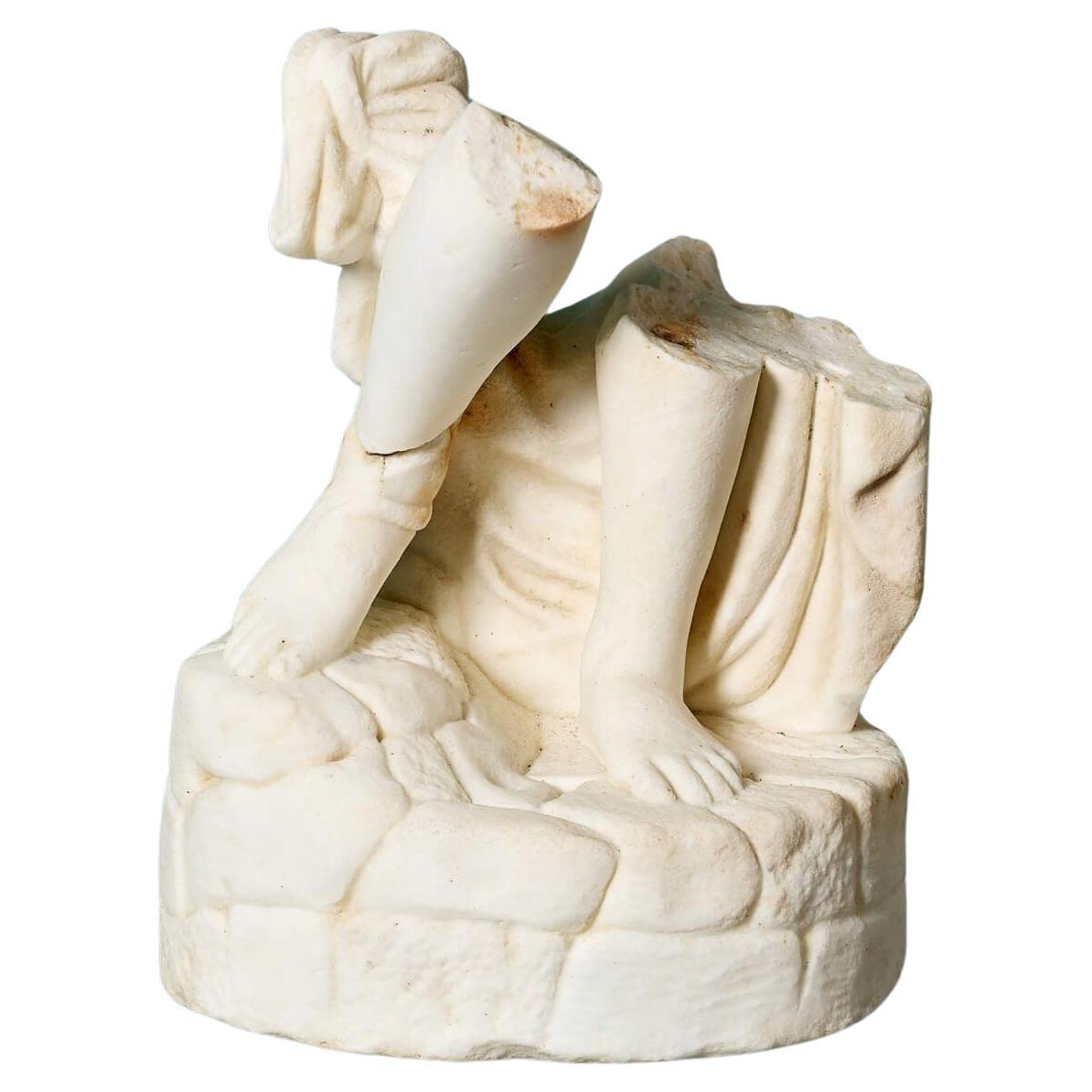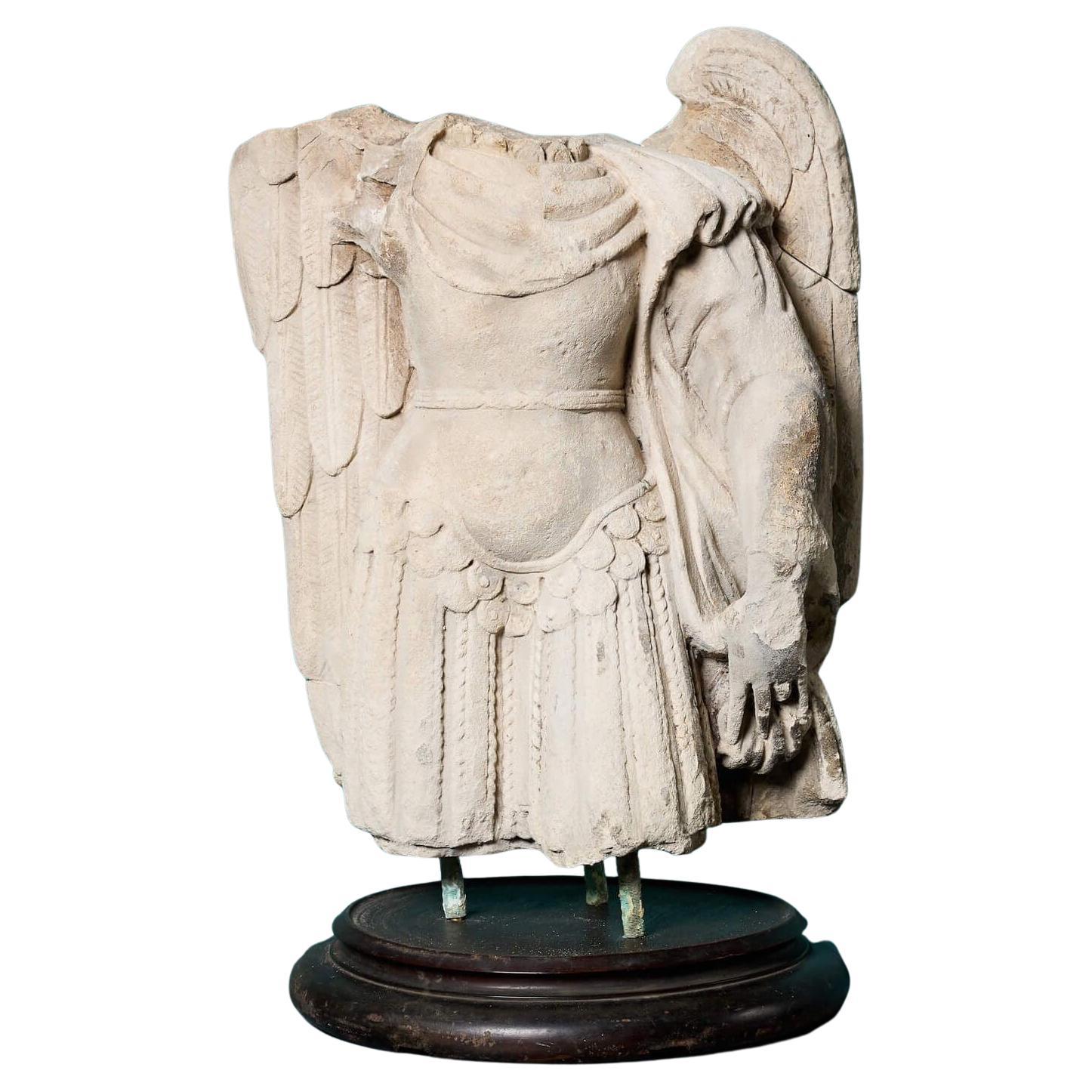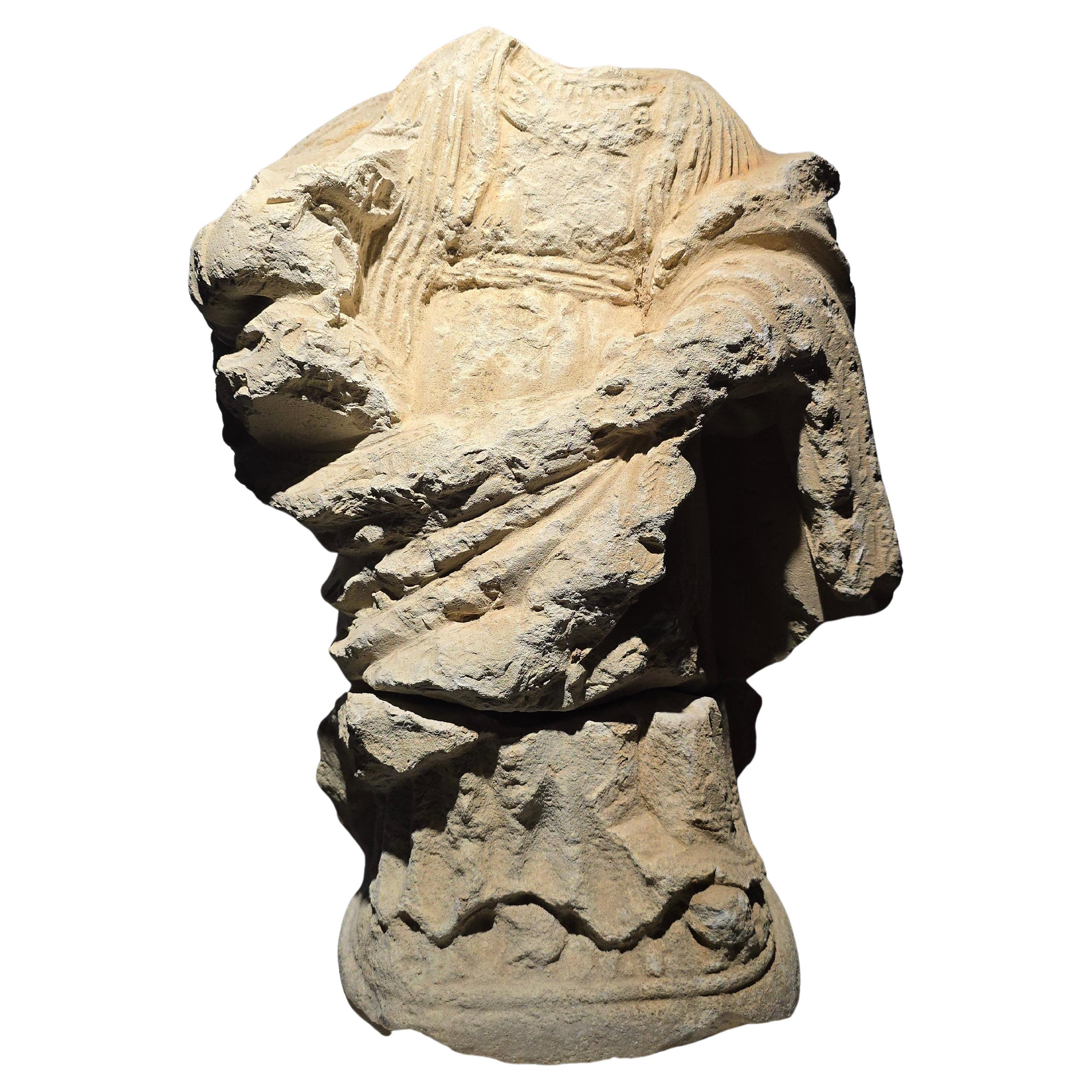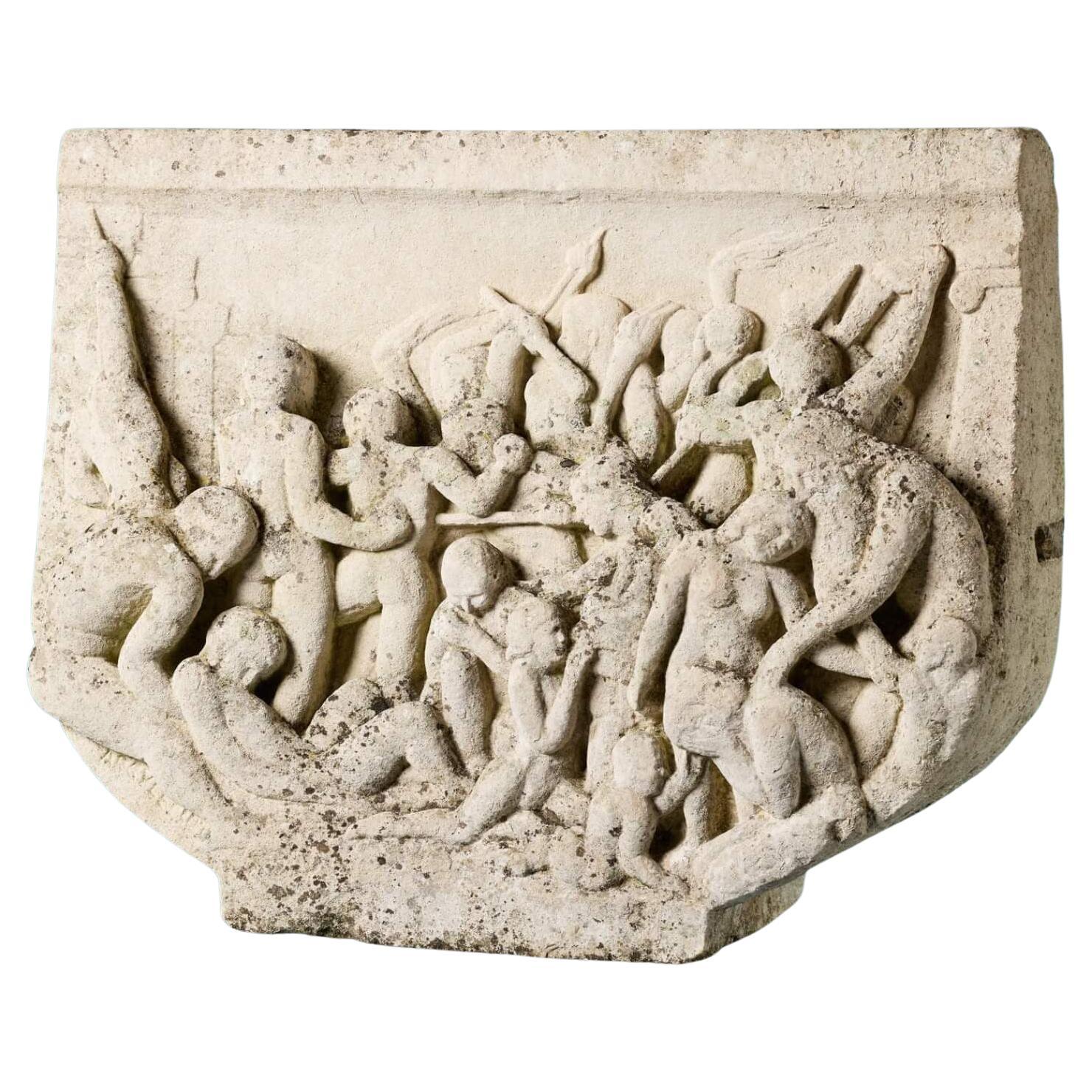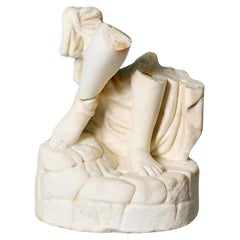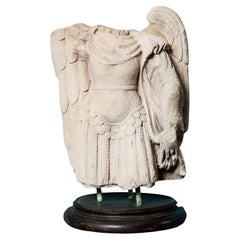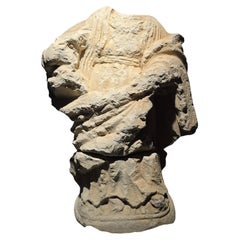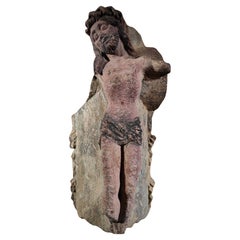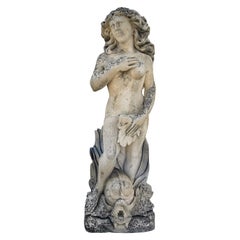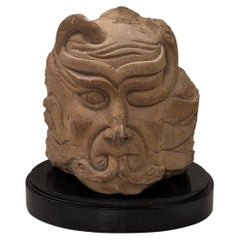Items Similar to 19th Century Fragmentary Stone Statue of an Angel & the Devil
Want more images or videos?
Request additional images or videos from the seller
1 of 7
19th Century Fragmentary Stone Statue of an Angel & the Devil
$3,963.51
£2,875
€3,357.27
CA$5,480.25
A$6,016.64
CHF 3,138.89
MX$72,809.67
NOK 39,341.14
SEK 37,069.69
DKK 25,061.12
About the Item
A 19th century antique stone fragmentary statue depicting an angel standing atop the devil, circa 1800.
Reminiscent of an ancient roman statue, this is a fragment from history – should it be able to talk, one could only wonder at what unique story it would tell!
Once part of a larger limestone statue, this fragment has survived the test of time with details of the angel’s handcarved feet and devil's face and hands still intact after more than 225 years.
A superb decorative sculptural piece for a display plinth or column where its timeworn beauty can be observed up close.
- Dimensions:Height: 17.72 in (45 cm)Width: 16.93 in (43 cm)Depth: 13.39 in (34 cm)
- Style:Neoclassical (In the Style Of)
- Materials and Techniques:
- Place of Origin:
- Period:
- Date of Manufacture:1800
- Condition:Good structural condition. Historic repairs and losses.
- Seller Location:Wormelow, GB
- Reference Number:Seller: 366351stDibs: LU2096344888092
About the Seller
4.9
Platinum Seller
Premium sellers with a 4.7+ rating and 24-hour response times
Established in 2006
1stDibs seller since 2016
721 sales on 1stDibs
Typical response time: 9 hours
- ShippingRetrieving quote...Shipping from: Wormelow, United Kingdom
- Return Policy
Authenticity Guarantee
In the unlikely event there’s an issue with an item’s authenticity, contact us within 1 year for a full refund. DetailsMoney-Back Guarantee
If your item is not as described, is damaged in transit, or does not arrive, contact us within 7 days for a full refund. Details24-Hour Cancellation
You have a 24-hour grace period in which to reconsider your purchase, with no questions asked.Vetted Professional Sellers
Our world-class sellers must adhere to strict standards for service and quality, maintaining the integrity of our listings.Price-Match Guarantee
If you find that a seller listed the same item for a lower price elsewhere, we’ll match it.Trusted Global Delivery
Our best-in-class carrier network provides specialized shipping options worldwide, including custom delivery.More From This Seller
View AllAntique Neoclassical Plaster Grotesque Herm Statue
Located in Wormelow, Herefordshire
An early 19th century plaster grotesque herm statue in the neoclassical style circa 1820. Once used as architectural interior decoration, it has a distressed look and depicts a figur...
Category
Antique Early 19th Century English Neoclassical Figurative Sculptures
Materials
Plaster
Antique Fragmentary Statuary Marble Sculpture
Located in Wormelow, Herefordshire
An antique fragment of a statuary marble sculpture, sourced from the estate of the late David Cornwell, best known as the author John le Carré.
Dating to circa 1840, this striking I...
Category
Antique Mid-19th Century Italian Neoclassical Figurative Sculptures
Materials
Marble, Statuary Marble
19th Century Fragmentary Stone Statue of an Angel Torso
Located in Wormelow, Herefordshire
A large decorative antique fragmentary stone statue of an angel torso circa 1800, mounted on a later 19th century mahogany plinth. Reminiscent of an ancient roman statue, this is a f...
Category
Antique Early 19th Century English Neoclassical Mounted Objects
Materials
Limestone
Carved Antique Stone Sculpture by a Student of Hugh Casson
Located in Wormelow, Herefordshire
This weathered antique stone sculpture was reputedly carved by a student of 20th century British architect and artist, Sir Hugh Casson. It depi...
Category
Mid-20th Century English Neoclassical Figurative Sculptures
Materials
Stone, Limestone
Medieval English Alabaster Statue
Located in Wormelow, Herefordshire
A medieval English alabaster statue, possibly dating as far back as the late 14th / early 15th century, mounted on one of our exclusive large display plinths. Well weathered over the centuries, this 600-year-old statue depicts a medieval cloaked figure, possibly a monk, offering a glimpse into English architecture and sculpture of the Middle Ages.
This sculpture is possibly made from Nottingham alabaster. During the 14th and 15th centuries, Nottingham was the centre of alabaster carving and painting. Alabaster works were mostly made as small alabaster models with religious themes. During the 16th century Reformation, many alabaster carvings were destroyed under King Henry VIII's rule, making any surviving examples even more significant.
Provenance
From the collection of Peter Hone (b. 1941). A master plaster caster, he is an expert and experienced collector, building up an extraordinary, museum-worthy collection of items in his one-bedroom flat in London W11...
Category
Antique 15th Century and Earlier English Medieval Figurative Sculptures
Materials
Alabaster
Antique Italian Alabaster Sculpture after Jean de Boulogne
Located in Wormelow, Herefordshire
A striking Italian alabaster sculpture of the Abduction of the Sabine Women, also known as Giambologna, after the antique by Jean de Boulogne.
This Grand Tour style piece has a beau...
Category
Antique Mid-19th Century Italian Neoclassical Figurative Sculptures
Materials
Alabaster
You May Also Like
French Gothic Stone Sculpture – 14th Century
Located in Madrid, ES
Possibly a Noblewoman
Elegant stone sculpture from 14th-century Gothic France, possibly representing a noble lady. The bust features finely carved details in the attire, with attent...
Category
Antique 15th Century and Earlier Figurative Sculptures
Materials
Limestone
Christo Carved Stone Sculpture, France, 15th Century: Museum-Quality Masterpiece
Located in Madrid, ES
Immerse yourself in the majesty of 15th-century France with this significant Christo sculpture carved in stone and polychromed, a masterpiece capturing the artistic essence of the er...
Category
Antique 15th Century and Earlier Figurative Sculptures
Materials
Stone
19th Century Limestone Statue from Italy
Located in Dallas, TX
This large limestone statue of a woman origins from Italy, circa 1880.
Category
Antique 19th Century Italian Statues
Materials
Limestone
Midcentury Stone Sculpture
Located in New York, NY
A circa 1950's Mexican sculpture on wood base.
Measurements:
Height: 10.5"
Width: 10"
Depth: 8"
Category
Vintage 1950s Mexican Figurative Sculptures
Materials
Stone
A 17th Century Mounted French Limestone Carving of a Winged Angel
Located in Dallas, TX
Originally part of a larger architectural from a French building in the 1600s, this hand-carved limestone fragment of a winged angel has been mounted more recently to a painted black...
Category
Antique 17th Century French Baroque Figurative Sculptures
Materials
Stone, Limestone, Metal
Sandstone Sculpture, Southern Germany, 18th Century
Located in Greding, DE
Sandstone sculpture of a saint in a garment rich in folds. Arms and attributes missing. Weathered patina condition.
Category
Antique 18th Century German Baroque Figurative Sculptures
Materials
Sandstone
More Ways To Browse
Antique Devil
Large Antique Fragment
Mannequin Rare
Marble Female Torso
Marcel Debut Bronze Sculpture
Mask Indian
Michelangelo Bronze
Mickey Mouse Sculpture
Modernist Sculpture Man
Moreau Bronze Pair
Napoleon Bonaparte Bronze
Napoleon On Horseback
Orpheus And Eurydice
Plaster Sculpture Paris
Polo Player Sculpture
Praying Monk
Raymonde Guerbe
Roman Marble Fragment
